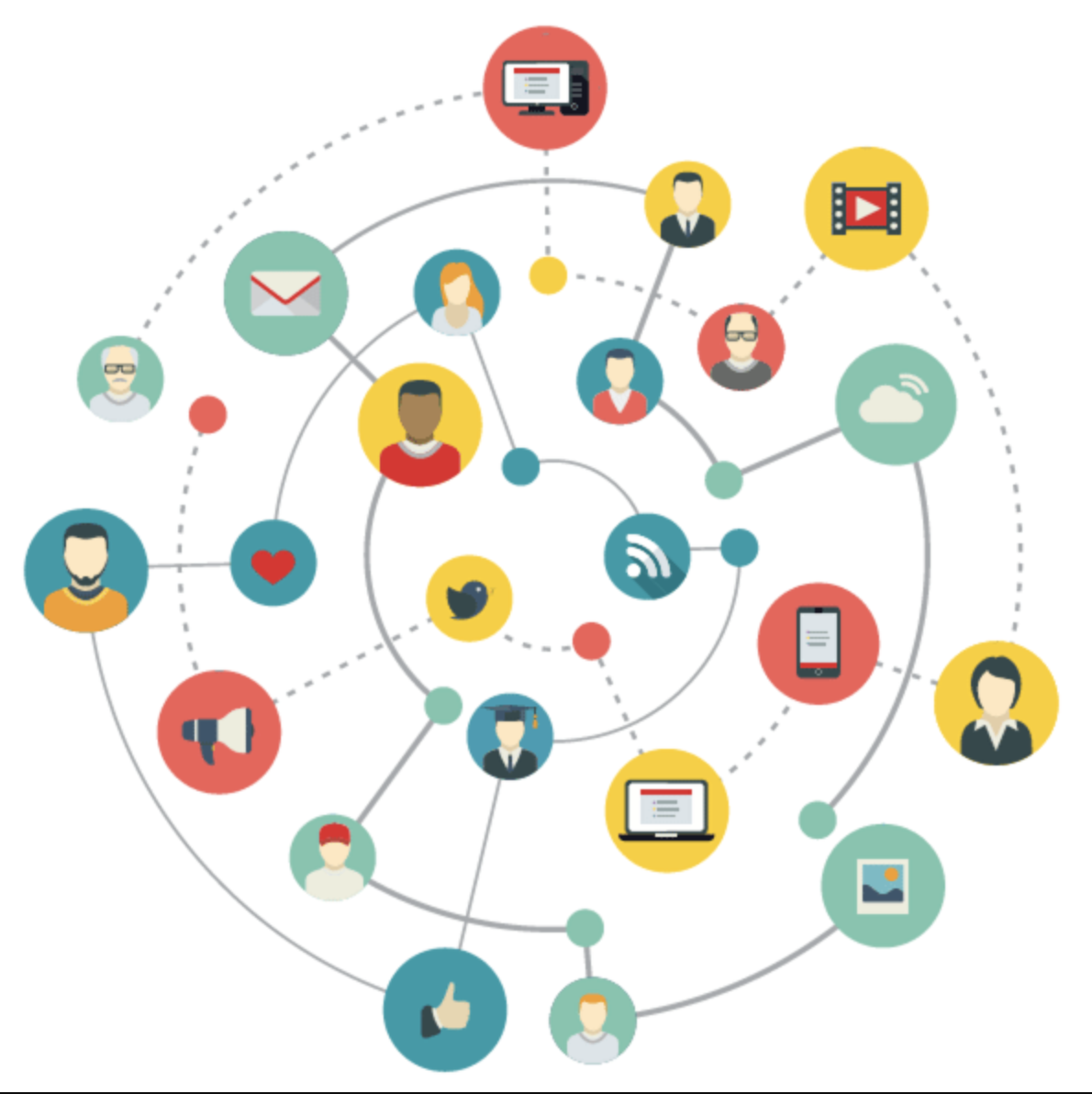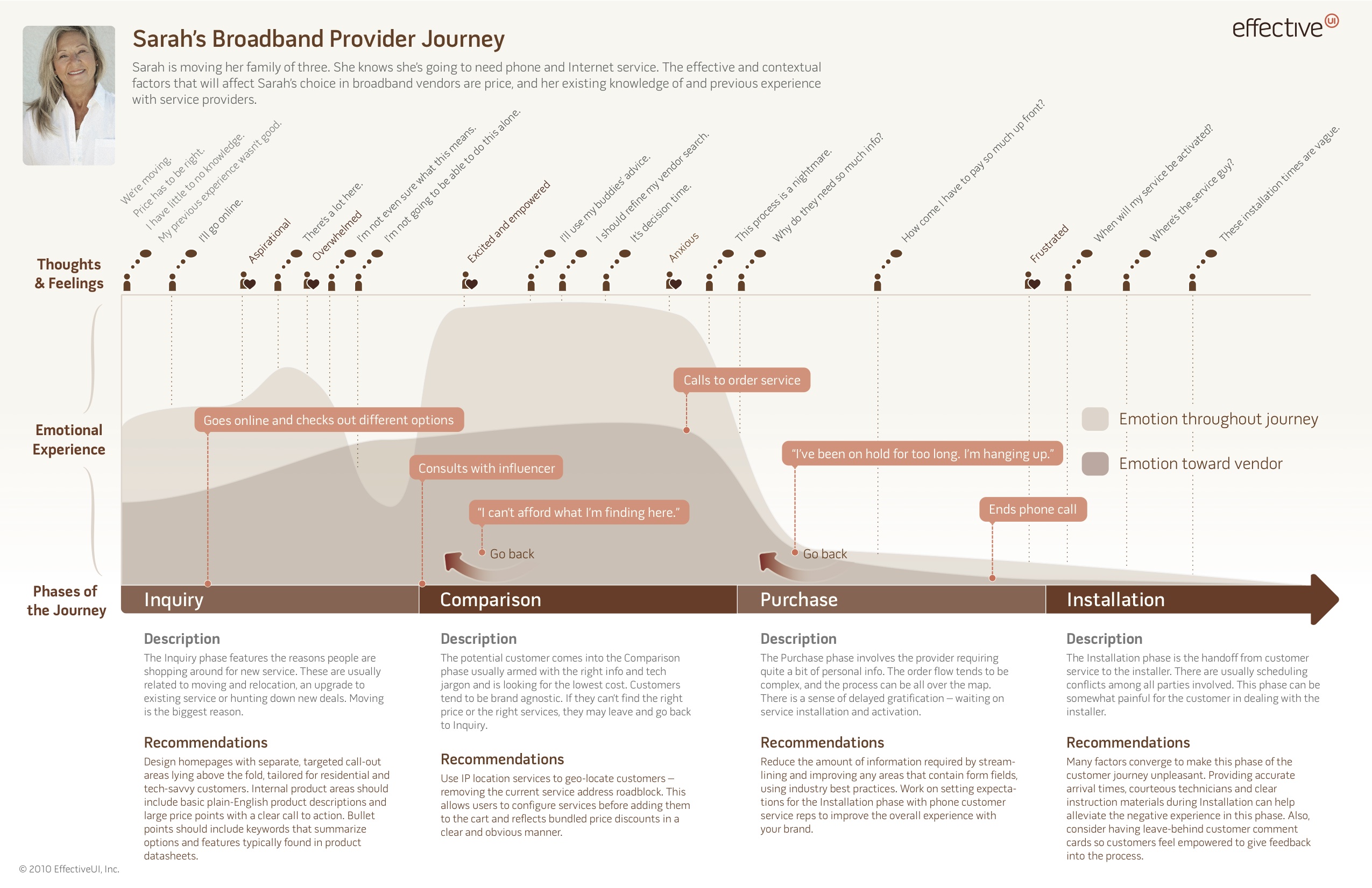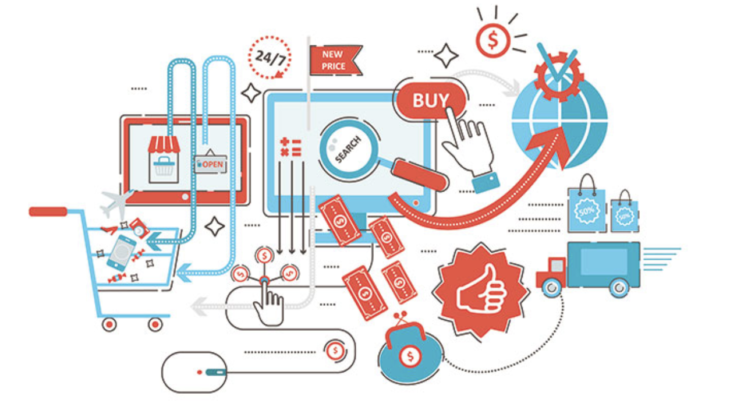Traditional polls that just recently accompanied most every marketing research have become obsolete nowadays. They can seldom boast objectiveness; moreover, current competitive market environment dictates that the time spent analyzing each such polling also seldom compensates.
One of the principally new approaches to analyzing the behavior and motivational points of potential buyers is mapping the customer journey. In fact, this tool can help reach quite high business profit readings in just a year of proper employment.
Let’s discuss what it is all about, how to employ this method in your actual business niche, and, finally, how to create a customer journey map.
What Is a Customer Journey Map?
So, what is a customer journey map? It is a tool for visualizing consumer interaction with product or service. The creation of this tool is not only a process of analyzing closely your customers’ behavior, but it is also a method of generating the product/service improvement ideas.
From Customer Personas to Customer Journey Maps
Generally speaking, the necessity of creating a customer journey map has acquired a systemized character. Instead of each department working with a customer separately on each stage of sales funnel, the approach where all the departments interact with each other, providing complex customer support has definitely demonstrated better results.
In such a way, buyers can feel constant guidance and care from the company employees’ side, which one of the decisive factors in providing an impeccable quality of service.
Importance of a Customer Journey Map
CJM, after some time past its initial implementation, on top of boosting the customer service quality, can also identify problematic moments and points of dissatisfaction/hesitation of customers choosing an option.
Notice also that many marketing experts put KPIs upon each journey map point in order to understand where the outage of potential buyers takes place.

When Do You Need a Customer Journey Map?
Due to the harsh market competitiveness in practically any niche, a CJM can be required in any type of business.
It is especially needed, however, by the sorts of business where multichannel interaction is important, i.e., for those cases where a customer can come across the product in various forms, through various channels.
Types of Customer Journey Maps
There are three ways to create a realistic customer journey map. Depending on the exact type of your business, the interaction can be conveniently represented in the form of:
- Linear graph (i.e., there is a distinct sequence of actions initiated by the user);
- Non-linear graph (where initial and end customer journey map touchpoints are known and the route can vary);
- Circles (reasonable to use when on their path, a customer accomplishes cyclical processes).
Key Elements of Customer Journey Maps
The key elements of CJM are:
- Touchpoints (points at which a customer hears/sees/reads/tries a product; they describe customer behavior, thoughts, emotions during the familiarization with or the repeated acquaintance with a product);
- Paths that connect them (these are the things that motivate customers to accomplish the actions of transition from one point to another; in fact, these can use some optimizing ideas for providing a transition from the starting point to the final stage of purchase that turns a one-time customer into the loyal one).
How to Research Your Customer Journey Map
In order to create your CJM, you will need to conduct an all-around TA study. Here, you can make good use of marketing research results, CRM data, and some authentic info from the manufacturer/owner of the product themselves.
It can be so, of course, that you do not have a close image to how your target audience will look like as of yet (this is especially relevant for the cases where the product market introduction is still only in plans). In such a case, you will have to define the TA that the analyzed product focuses on your own.
Notice that a CJM is not built for the whole TA at once, but for each customer portrait separately. Before composing your map, think which customer portrait can be the most important one for your product or service, and start implementing a CJM in your business processes from it.
How to Create a Customer Journey Map Step-By-Step
You may still be confused about how to map a customers journey. To get a consistent understanding of how a CJM is made, we suggest you follow this list of subsequent preparational actions:
- Define major buyers groups, create a customer portrait for each. Each portrait will have its map, in turn;
- Formulate a sales funnel for each character;
- Define customer goals, fears, issues on each step of the way;
- Fixate the customer and company interaction points in different social channels (it is, usually, social networks, official company websites, offline sales points etc.). As a result, you will get a user experience map, following which, you can further build the map of customer emotional reaction on each touchpoint;
- Distinctly formulate the desired KPI for each stage;
- Define obstacles staying in the way of reaching KPI;
- Discuss possible ways to overcome these obstacles with your team;
- Conduct an optimization – perhaps, KPI can be increased, while the list of the bug fixing events can be shortened.
How to Use Your Customer Journey Map
To write a customer journey map is to systematize customer relations by providing them with the best fitting offers and brand reminders at the most proper point in time.
Keep in mind as well that any prospects of customer journey mapping bringing felt profit increases can be seen in one-two years after its initial implementation.
Another notable fact is that once you launch a CJM governing your business processes, it can and should be corrected from time to time — according to new products appearing (in your company and your market niche as a whole), customer demands changes and sources of influencing your TA’s opinion variation.
Evaluating a Customer Journey Map
Once you have designed an initial vision of your map, it is time to discuss and optimize it. Plan a meet-up with all the departments directly and indirectly involved with customers – perhaps, guided by the experience of working in your company, they will suggest something different to what you see as your efficient CJM.
Applying Your Journey Map to Your Business
After you have discussed all the controversial points with your team, you can get to launching your journey map into use. The main thing is to remember that the created (especially, initially created) map can and will be customized later on.
If its current format does not bring you the desired level of sales, then, probably, you need to change the representation a bit and wait.
Customer Journey Map Visualization
From the visualization perspective, a customer journey map is a direct graph that demonstrates customer touchdowns with the brand attributes on their way to making a purchase.
In turn, there are dedicated online services for the creation of maps with convenient graphic interface, as, for instance, Gliffy or Microsoft Visio (although, some amount of the staff designer’s effort can sometimes be quite enough to design a customer journey map).
Customer Journey Map Examples
To help you figure out better how a readymade scheme looks like, we would like you to take a look at a few customer journey map examples:



As you can see, they all differ in the representation format a bit, so, in order to not confuse the beginners, we suggest you take a look at a bunch of our tips on how to do customer journey mapping.
Tips for Creating a Customer Journey Map
And now for a few recommendations on forming the structure of your CJM.
Horizontally, you should display the stages of customer interaction with a product/service. There are usually, three:
- “Before” — a customer finds out about a product/service. Here, you need to find out about the way your potential buyers search for information in order to take a direct part in the similar process and come up with some new ways to interest them more;
- “During” — the purchase/employment of a product/service stage, as well as the stage of transition to the regular use. It is highly important to make an utterly positive impression on the potential customer during this stage, as the real customer interaction experience is not generated yet;
- “After” — the final servicing stage, with a possible repeated customer visit or realization of the fact that a customer will not come back again. In any case, you must create an ever-inviting atmosphere for any customer.
Vertically, such interaction aspects must be defined as follows:
- Customer goals and tasks on each stage;
- Touchpoints with a product/service and interaction channels;
- Customer actions on each stage;
- Expected by a customer result of interaction;
- Issues and obstacles keeping a customer from advancing towards the next step (this especially concerns a customer’s mental state);
- Materials, tools, equipment used by a customer on each touchdown (optionally);
- KPI on a certain stage;
- Customer thoughts and emotions (marketers often quote customers here);
- Ideas and suggestions for an improvement of the servicing quality and detected issues fixing.
Once all of these aspects are worked through, you will get a complex plan for attracting new and retaining old customers.

In regards to how to build a customer journey map, you can see that creating a customer journey map with the right approach can help lead your sales towards a brand new level.
In order to build a customer journey map that works, you can use software tools that store your customers’ data – e.g., CRM systems, such as Nimble.


